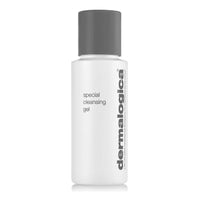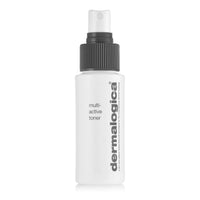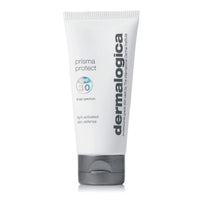If you have the redness, discomfort, and dehydration associated with sensitive skin, your environment may be to blame. Studies are showing that environmental triggers (yes, the very air we breathe) can actually sensitize our skin. Sensitized skin from your environment is different from genetic sensitivity, or being born with sensitive skin.
What do we mean by your environment? Think pollution, humidity, and sudden temperature changes in climates – like going from the cold, dry winds outdoors to dry heat indoors.
sensitized skin explained
When your skin is sensitized, its protective outer layer lets irritants, microbes and allergens pass through and cause adverse reactions such as blushing and allergies. Air pollution particles hover in big cities, the countryside and even in homes. Small enough to enter skin, they can accelerate skin sensitivity and irritation.
Is your environment sensitizing your skin?
culprit #1: pollution
Air pollution contains microscopic contaminants, called polycyclic aromatic hydrocarbons (PAHs), which help produce Reactive Oxygen Species (ROS), or "free radicals." These strip the skin of barrier lipids, which help retain moisture and keep out dirt and other impurities. A compromised skin barrier can lead to increased skin sensitivity, discomfort and even premature signs of skin aging.
culprit #2: humidity
When the skin is exposed to low humidity, this moisture evaporates quickly, leading to dryness, irritation, and peeling.
High humidity levels can also impact the skin. Your pores on the skin absorb moisture, which is commonly a good thing. However, high humidity levels can lead to excess sweat and oil myproduction therefor clogging your pores with toxins. Additionally, high humidity promotes the growth of bacteria and mold resulting in skin irritation, redness, and even breakouts.
To top it all off, humidity can even cause the body to sweat more, which also dries the skin out.
culprit #3: temperature
Colder weather, central heating in your home as well as hot weather and air conditioning can all deprive skin of its moisture, leaving it feeling dry, irritated, and sensitive. Bitter cold winds can also strip moisture from skin left exposed. In the winter months, you might find your skin to be rough, red, tight, cracked or peeling. Ouch!
The heat can also lead to skin sensitivities like a heat rash, which happens when your sweat ducts get closed off. The moisture gets trapped under the skin and can lead to a rash made up of blisters or bumps!
The good news is that the skin – when healthy – is a pretty efficient filter of what's good versus what's bad on its own. And, since you can’t always avoid harsh environmental factors like pollution or extreme weather, here’s how to keep your skin calm, strong, and healthy.
the solution? find strength in sensitivity
Our UltraCalming™ line soothes dehydration and discomfort – so you can stop hiding behind skin sensitivity. Every UltraCalming™ product is also formulated without lanolin, SD alcohol, mineral oil, artificial fragrances or colors, which can make sensitive skin worse.



















